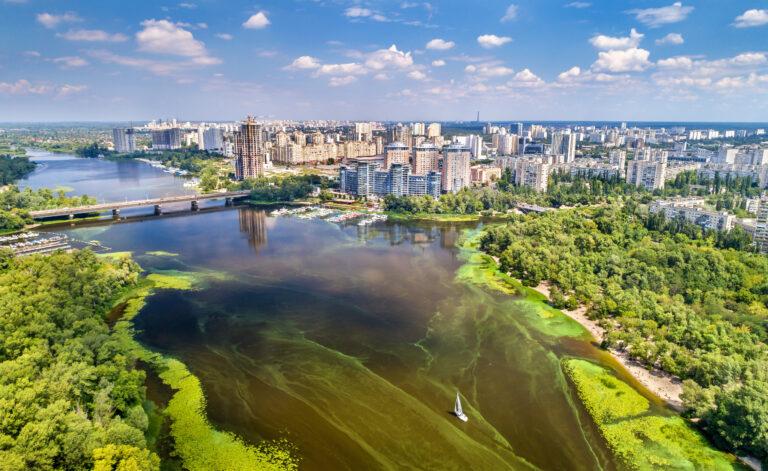β-N-methylamino-L-alanine (BMAA) is a neurotoxin and it is suspected of being associated with neurodegenerative diseases like amyotrophic lateral sclerosis/Parkinsonism-dementia complex (ALS/PDC) and Alzheimer-disease. In the 1950s the occurrence of ALS/PDC among the indigenous population of the islands of Japan (Kii Peninsula, Honshu) and Indonesia (Island of New Guinea in West Papua) was 50-100 times higher than worldwide. Eating cycad seeds (Cycas micronesica), food made from them (flour), eating animals that eat cycad seeds (bats, pigs, deer) is clearly associated with the development of ALS/PDC.
In 2003, it was described that several Cyanobacter can produce BMAA. Cyanobacter live in symbiosis with cycads on their roots, but despite/besides this, Cyanobacter in water can also produce BMAA. Locally, in addition to lakes, lagoons, algal (algae-prone) shorelines, several areas in France and the USA have been identified with higher incidence of ALS/PDC patients. The link was explained by the shellfish produced and consumed in these areas. BMAA can also be detected in other seafood, blue-green algae preparations (BGAS), drinking water. BMAA levels of up to 20 µg/kg have been measured in flounder, herring, and up to 14.000 µg/kg in oysters and mussels. BMAA concentrations are typically higher during summer.
The possibilities for detecting BMAA have changed greatly as analytical methods have evolved. It is not yet certain whether BMAA is indeed produced by Cyanobacter and, if so, in what state (stable, bound). At present, there is little data available, and BMAA levels have not been measured much. The ALS/PDC development-BMAA cases described so far are inconclusive, there are still many open questions. The French ANSES did not consider the available data sufficient to establish a clear link between ALS/PDC and BMAA. However, both in vivo and in vitro experiments have demonstrated neurodegenerative effects of BMAA. EFSA's Emerging Risk Network (EREN) decided in 2017 that it is not possible to perform a risk assessment at this stage and that more reliable analytical methods are needed. In addition, the impact of climate change, which will lead to a greater spread of Cyanobacter, needs to be taken into account and more epidemiological data is required.
In addition to the topic, cyanobacterial neurotoxins were identified as the cause of death responsible for the mass elephant deaths in Botswana in the autumn of 2020.
Since 2019, there have been an increasing number of reports in the media and in various professional forums, which have addressed the increasing phenomenon of (harmful) algal blooms.
In the context of algal blooms, it is useful to distinguish between seas/oceans and freshwater/surface water. In the seas and oceans, algae are the main cause of toxic algal blooms, and although there are also "bothersome" algae in freshwaters, the main problem is caused by cyanobacteria, or blue-green algae as they used to be called. The mass overgrowth of these species is very spectacular: the water becomes heavily discoloured to a bluish-green, reddish-yellow or brownish tint. The phenomenon is often accompanied by an unpleasant odour and a change in taste. Extreme oxygen conditions are created in the water affected, and toxic metabolites can have harmful effects on certain groups of organisms when certain species proliferate. Some algal blooms have been observed to kill only one group of organisms, such as fish, while in other cases adverse effects have been observed in humans, with skin rashes and even serious illnesses and death from algal blooms in drinking water storage reservoirs.
Ho and his colleagues published the results of their research in 2019, examining algal blooms in lakes larger than 100 square kilometres, based on images taken by the Landsat satellite between 1984 and 2012. The study does not give a picture of the current state of the lakes, but it provides insight on the typical trends. The results show that algal blooms are increasing in number and extent. Only a few lakes have been found to be improving, including Lake Balaton, at least until 2012. The researchers hypothesise that the lakes showing improvement have been less affected by global warming, suggesting that climate change may be inhibiting water purification.
Several cyanobacteria are found in Lake Balaton, which are potential toxin-producing organisms. Their proliferation poses a significant ecological risk and makes many human uses of water difficult or even impossible. There were some problems with the water quality of Lake Balaton in the summer of 2019 and 2020, bringing algal blooms and their potential threat back into focus. Lajos Vörös, a researcher at the Balaton Limnological Institute, said that there is currently insufficient research capacity to identify the causes. Climate change, rising water temperatures (and other factors) may lead to more frequent algal blooms in Lake Balaton or even in other lakes in Hungary in the future.
In the light of the above information, we believe that this is a case worth following up, as the quality and safety of our natural waters is of paramount importance.

